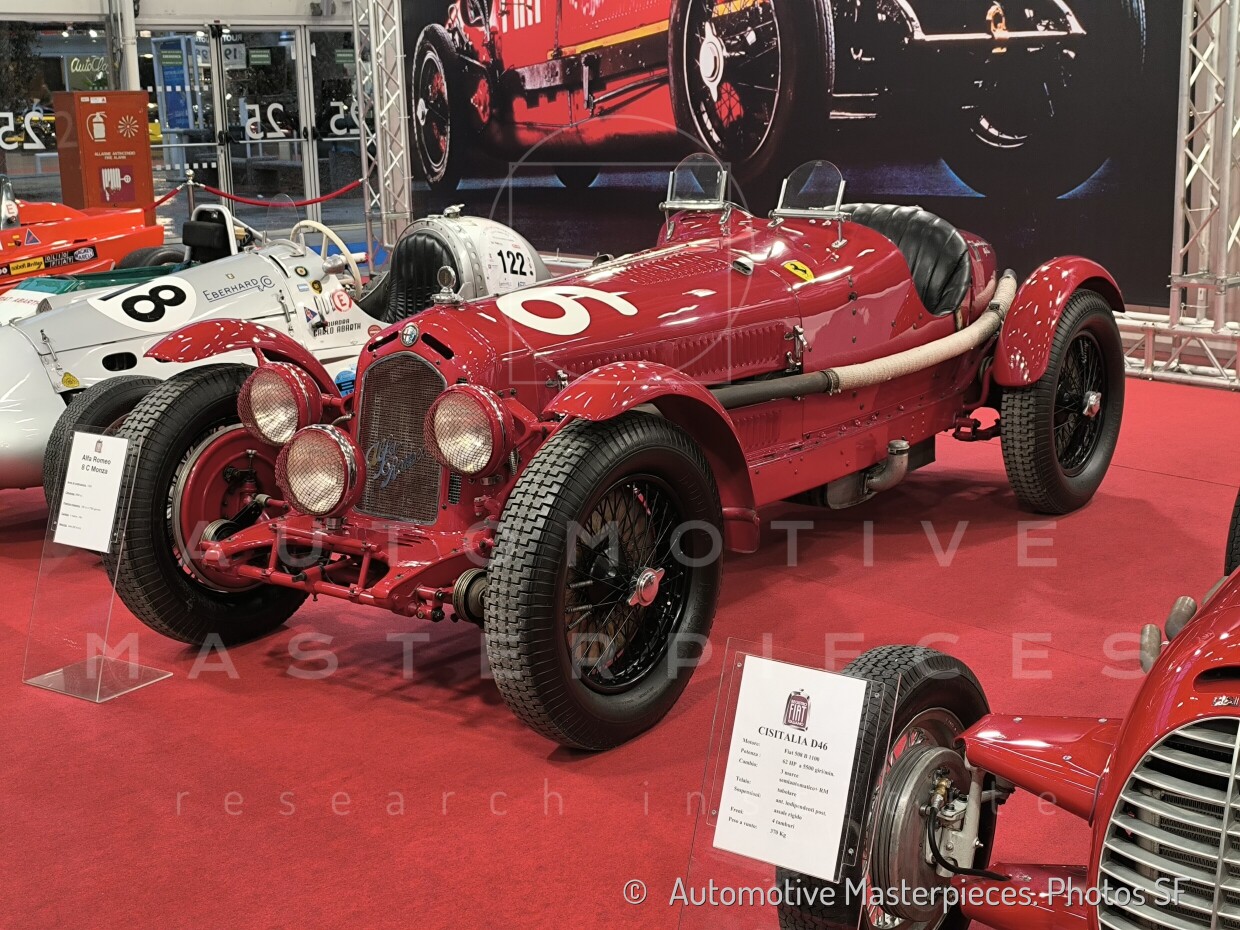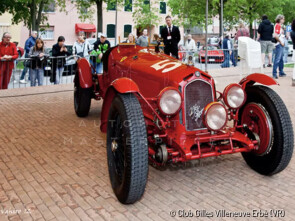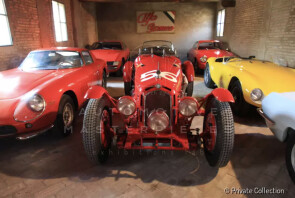
1933 Alfa Romeo 8C 2600 Monza
ON/OFF
Why am I an Automotive Masterpiece?
J. Movie cars
"Enzo Ferrari". Enzo Ferrari is a 2003 bio-pic based on the book by Enzo Biagi. Starring Sergio Castellitto (Enzo Ferrari). The car appears in the race with the no. 56
L. Limited edition cars
no. 10 manufactured
The Alfa Romeo 8C family represented the pinnacle of technological achievement reached by the "Casa del Portello" in the 1930s. Designed in 1930 by Vittorio Jano, they were produced from 1931 to 1938 in various versions, both for the road and competition, named according to their displacement and body type. High performance, excellent road handling, and reliability placed the 8C among the best cars of their era. According to Jano, a car designed for racing should not only be powerful but also stable, maneuverable, and as lightweight as possible to adapt to road use. The 8C elevated this principle to the maximum, evident in the results achieved in both road and track races. Jano designed the engine, leveraging experience gained from the P2 on the tracks and the 6C series on the roads. Exceptional qualities of power, elasticity, and robustness ensured competitiveness and longevity. Jano opted for an inline 8-cylinder twin-cam aluminum engine, supercharged with a volumetric compressor, starting at 2336 cc. The internal cylinder measurements were identical to those of the 6C 1750, along with other internal details, to control costs. The final displacement increased subsequently to 2600 cc and then up to 2900 cc. To avoid torsion problems due to the length of the inline 8-cylinder crankshaft, Jano chose the split-block solution. This allowed him to divide the engine in half, into two blocks of four cylinders with the distribution in the center. Dry sump lubrication was employed. The two aluminum alloy cylinder heads followed the design of the 6C engine. The obtained power was 142 hp at 5000 rpm, a very high figure for the time and especially usable thanks to the flexibility provided by the compressor. The chassis, with longitudinal and cross members, was available in three different lengths: "Lungo" (3100 mm) for endurance races, "Corto" (2750 mm) for road races, and "Monza" (2650 mm) for circuit races. The suspension system featured a live axle with semi-elliptical leaf springs. The drum brakes, finned, were rod operated. Subsequently, on the 8C 2900, independent four-wheel suspensions were introduced, and the brakes adopted hydraulic control. The steering was on the right, as was customary in the 1930s. The first version, 8C 2300, was produced between 1931 and 1935 in 188 or 189 units, becoming the car to beat in any competition and sought after by the best drivers and wealthy gentlemen drivers. Celebrated coachbuilders began to clothe the naked chassis. The only real "flaw" was the high price. The exceptional results of this car in racing provided the pretext in 1933 for Alfa Romeo to withdraw from racing, having demonstrated its unbeatable prowess. In reality, the reason was economic: the production of the 8C and sporting activities were costly, and the Milanese company struggled to generate sufficient profits. Still, the IRI (Istituto di Ricostruzione Industriale), supported by Mussolini, represented the salvation of the company. The name Alfa Romeo was kept high in racing by Scuderia Ferrari.
In 1933, the Scuderia Ferrari from Modena kept the Alfa Romeo name flying high in racing. Since 1929, their Alfa Romeo 8C 2300 cars had been clinching major victories. That year, they secured three big wins: the Mille Miglia in April with Nuvolari and Compagnoni, the Targa Florio in May with Brivio, and the 24 Hours of Le Mans in June with Sommer and Nuvolari. To keep winning, Scuderia Ferrari increased the engine size of the 8C 2300 Monza to 2654 cm³, thus achieving 180 HP. These enhanced cars, used both as single-seaters and modified two-seaters for racing, became known as the 8C 2600 Monza. After Alfa Romeo withdrew from racing, their Tipo B P3 cars were handed over to Ferrari to replace the 2.6 8C 2300 Monza cars that could no longer outperform the new Maseratis.
The chassis no. 2211137 is one of the last (the third to last, being the last one it is n° 2211139) of the 88 8C 2300 II series chassis produced between 1932 and 1933. It is one of the rare original Monza versions that feature the Scuderia Ferrari uprated 2.6 L engine, two seats and a still short-wheelbase chassis. The famous 1930s driver, Tazio Nuvolari, drove the Monza in many of his races, and this chassis was his personal car from May 31, 1933, to February 7, 1934. After that, the gentleman driver Luigi Soffietti purchased the 8C and competed in several races and GPs, including the 1934 Mille Miglia, the Parma-Poggio di Berceto, and the German Grand Prix. In 1935 and 1936, this 8C was entered in another two Mille Miglias with the gentleman driver Giovanni Battista Santinelli.







